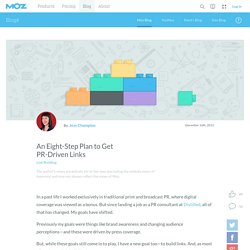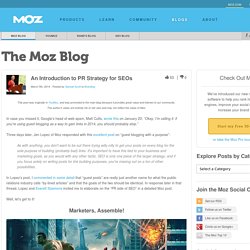

When should startups seek media coverage? (and when not to) We receive dozens of emails from startups every week looking for coverage in Tech in Asia, and while some might be interesting, they don’t necessarily send us anything newsworthy. Every media outlet worth its salt will be looking for a news peg – an event that makes the piece timely. In the startup world, a few types of pegs in particular capture our attention. To help prevent both sides of this interaction from wasting time or missing out on good future coverage, we’ve put together a list of when – and when not – to seek media coverage as a startup. You should send out a request for coverage when you … Launch This can be the launch of an open beta or a full launch, but probably not both, unless there are major changes to the completed version.
Receive investment This is more likely to be picked up by media specializing in the startup and finance sectors. Make a profit Expand to another country Like making a profit, international expansion is another indicator of success. Can offer expertise. The Hacker’s Guide to Getting Press. The Hacker’s Guide to Getting Press Note: This is the second chapter of The Hacker’s Guide to User Acquisition.

I’m publishing them for free as I go. See the other chapters here. If you want to get the other chapters as I write them, sign up below: Preface There’s nothing a startup (or any company, really) needs quite as much as press. It’s taken me years of trial and error, the help of a lot of other really smart marketers, and tons of time playing with hacks and tweaking language and strategy to figure out what works across the board and boil it down to a repeatable process.
Time Magazine BBC The Guardian TechCrunch PandoDaily Slate Gizmodo and hundreds of smaller blogs/websites. A special hat-tip goes out to colleagues Fit Marketing for helping me (and paying me) to come up with this stuff. Overview On the surface, the process of getting press seems reasonably simple. Now, let’s go get you some press. Overall Strategy and Approach Customer Profiling The Press Pyramid Scrubbing the list Logos. An Eight-Step Plan to Get PR-Driven Links. In a past life I worked exclusively in traditional print and broadcast PR, where digital coverage was viewed as a bonus.

But since landing a job as a PR consultant at Distilled, all of that has changed. My goals have shifted. Previously my goals were things like brand awareness and changing audience perceptions—and these were driven by press coverage. But, while these goals still come in to play, I have a new goal too—to build links. And, as most of you know, link building is not easy. So, eight months down the line, I feel it's time to share what I've learned. An eight-step plan There are a few tried and tested methods for PR driven link-building, like guest posting and pitching for by-lined articles, but these can be slow-burning processes.
What I'm going to talk you through is a process which, if invested in and executed well, is much more likely to result in multiple links from high quality, authoritative news sites. There's no quick fix. Step one: Find the story Image: @Distilled 1. 2. 3. An Introduction to PR Strategy for SEOs. In case you missed it, Google’s head of web spam, Matt Cutts, wrote this on January 20: “Okay, I’m calling it: if you’re using guest blogging as a way to gain links in 2014, you should probably stop.”

Three days later, Jen Lopez of Moz responded with this excellent post on “guest blogging with a purpose”: As with anything, you don't want to be out there trying willy-nilly to get your posts on every blog for the sole purpose of building (probably bad) links. It's important to have this tied to your business and marketing goals, as you would with any other tactic. SEO is only one piece of the larger strategy, and if you focus solely on writing posts for link building purposes, you're missing out on a ton of other possibilities.
In Lopez’s post, I commented in some detail that “guest posts” are really just another name for what the public relations industry calls “by-lined articles” and that the goals of the two should be identical. Well, let’s get to it! Marketers, Assemble! 1. 2. 3. 4. 5.